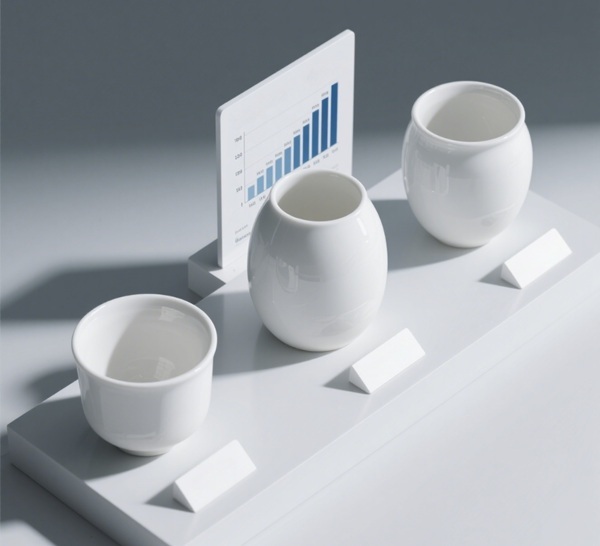Al₂O₃ vs ZTA vs YTZ Ceramics: Which Material Offers the Best Strength and Wear Resistance?
Ceramics play a critical role in many industrial applications where strength and wear resistance are paramount. Among the various ceramic materials, Alumina (Al₂O₃), Zirconia Toughened Alumina (ZTA), and Yttria Stabilized Zirconia (YTZ) stand out due to their distinctive mechanical and wear properties. This article compares these three ceramics, focusing on their strength and wear resistance to help engineers, designers, and buyers make informed decisions. Understanding their differences and how each material behaves under stress and wear conditions can directly impact the performance and lifespan of components in industries such as aerospace, biomedical, and manufacturing.
At Advanced Ceramic Hub, we specialize in high-quality ceramic products, ensuring optimal performance for industrial and scientific applications.

What Are Alumina, ZTA, and YTZ Ceramics?
To understand which ceramic offers the best strength and wear resistance, it’s essential to first know what these materials are. Alumina, or aluminum oxide (Al₂O₃), is a widely used ceramic known for its high hardness and chemical inertness. Zirconia Toughened Alumina (ZTA) is a composite material made by adding zirconia particles to alumina, which significantly improves its toughness and wear resistance. Yttria Stabilized Zirconia (YTZ) involves zirconia stabilized with yttria (yttrium oxide), resulting in a ceramic with excellent fracture toughness and thermal stability. Each material has distinct microstructures and manufacturing processes that influence its mechanical properties.
| Material | Composition | Key Characteristics | Typical Uses |
| Alumina (Al₂O₃) | Aluminum oxide | High hardness, chemical inertness | Electrical insulators, cutting tools |
| ZTA | Alumina + Zirconia | Enhanced toughness, wear resistance | Structural components, cutting tools |
| YTZ | Zirconia + Yttria | High fracture toughness, thermal stability | Medical implants, aerospace parts |
The differences in composition create unique material properties that cater to varying application demands. The inclusion of zirconia in ZTA and yttria in YTZ alters their mechanical behavior compared to pure alumina.
Explore our high-quality ceramic products.
How Do the Strengths of Alumina, ZTA, and YTZ Compare?
Strength is a fundamental property when selecting ceramic materials, especially for wear-prone or load-bearing parts. Hardness measures resistance to surface deformation, flexural strength reflects the ability to withstand bending stresses, and fracture toughness indicates the material’s resistance to crack propagation. Alumina exhibits very high hardness but relatively moderate toughness. ZTA offers a balance, maintaining high hardness with much better toughness due to zirconia’s crack-arresting effect. YTZ has the highest fracture toughness among the three, but slightly lower hardness.
| Material | Hardness (GPa) | Flexural Strength (MPa) | Fracture Toughness (MPa·m^0.5) |
| Alumina | 15 – 20 | 300 – 400 | 3 – 4 |
| ZTA | 12 – 18 | 600 – 900 | 6 – 10 |
| YTZ | 10 – 12 | 500 – 700 | 8 – 12 |
This data clearly shows ZTA’s strength advantage in flexural strength, making it ideal for applications where toughness and wear resistance must be balanced. YTZ excels in fracture toughness, which benefits shock resistance and durability under cyclic stresses. Alumina’s superior hardness supports wear resistance, but with a trade-off in brittleness.
What Factors Influence the Wear Resistance of These Ceramics?
Wear resistance depends on several intrinsic and extrinsic factors such as hardness, toughness, microstructure, and operating environment. Different wear mechanisms, including abrasive, adhesive, and fatigue wear, act differently depending on the material’s properties. Alumina’s high hardness provides excellent resistance to abrasive wear, but it is less resistant to fatigue and adhesive wear. ZTA’s zirconia phase improves toughness and adhesive wear resistance, while YTZ offers superior resistance to fatigue wear due to its enhanced toughness.
| Wear Mechanism | Alumina | ZTA | YTZ |
| Abrasive Wear | High resistance | Moderate resistance | Lower resistance |
| Adhesive Wear | Moderate | High resistance | High resistance |
| Fatigue Wear | Moderate | High resistance | High resistance |
Wear resistance is not solely about hardness; the ability to prevent crack initiation and propagation is critical. Hence, ZTA and YTZ often outperform pure alumina in dynamic or harsh wear conditions, despite their lower hardness values.
How Does Microstructure Affect the Performance of Alumina, ZTA, and YTZ?
The microstructure of ceramics plays a vital role in determining mechanical and wear performance. Grain size impacts strength, with finer grains typically enhancing hardness but sometimes reducing toughness. The presence of a second phase, such as zirconia in ZTA, introduces transformation toughening, which improves crack resistance. YTZ’s yttria stabilizer maintains the zirconia phase stability at room temperature, preventing phase changes that can weaken the material.
| Material | Grain Size (μm) | Second Phase | Stabilizer Content (%) |
| Alumina | 1 – 5 | None | N/A |
| ZTA | 1 – 3 | Zirconia particles | 10 – 15 |
| YTZ | 0.5 – 2 | Zirconia stabilized by yttria | 3 – 8 |
Microstructural control during manufacturing is crucial. For example, excessive grain growth can reduce toughness, while an optimal zirconia content in ZTA enhances transformation toughening without compromising hardness. YTZ’s finely stabilized grains contribute to its unique combination of toughness and thermal shock resistance.
What Are the Typical Industrial Applications of Alumina, ZTA, and YTZ?
The choice of ceramic often depends on application requirements. Alumina’s chemical stability and hardness suit electrical insulators and abrasive-resistant parts. ZTA’s enhanced toughness and wear resistance make it suitable for cutting tools, wear parts, and structural components. YTZ, with its excellent toughness and thermal properties, finds use in medical implants and aerospace components that face thermal cycling and mechanical stress.
| Application | Alumina | ZTA | YTZ |
| Cutting tools | ✓ | ✓ | |
| Wear-resistant parts | ✓ | ✓ | |
| Medical implants | ✓ | ||
| Aerospace components | ✓ |
These applications reflect how the materials’ mechanical profiles align with industry needs. Understanding these helps optimize performance and cost efficiency in component design.
Request a custom quote for various ceramic products.
How Does Cost and Availability Affect the Choice Between Alumina, ZTA, and YTZ?
Material cost and availability often influence final material selection in industrial settings. Alumina is the most affordable and widely available, making it a popular choice for high-volume applications. ZTA, due to added zirconia and more complex processing, comes at a moderate cost. YTZ is the most expensive because of its specialized stabilizers and manufacturing challenges, which limit its availability.
| Material | Approximate Cost (USD/kg) | Production Complexity | Availability |
| Alumina | 5 – 10 | Low | High |
| ZTA | 15 – 25 | Medium | Medium |
| YTZ | 30 – 50 | High | Low |
This cost-performance balance must be carefully considered to achieve economic and technical feasibility, especially for large-scale manufacturing or budget-sensitive projects.
What Advantages Does Each Ceramic Offer Over the Others?
Each ceramic material offers unique advantages that make it suitable for particular scenarios. Alumina’s cost-effectiveness and hardness excel where abrasive wear resistance is critical. ZTA’s improved toughness allows it to resist fracture and wear better in dynamic environments. YTZ’s outstanding toughness and thermal shock resistance make it ideal for extreme conditions like biomedical implants or aerospace parts.
| Material | Key Advantages |
| Alumina | Cost-effective, excellent hardness, chemical stability |
| ZTA | Superior toughness, enhanced wear resistance |
| YTZ | Outstanding fracture toughness, thermal shock resistance |
Recognizing these advantages helps in selecting the right material based on the application demands rather than defaulting to a single ceramic type.
What Are the Emerging Trends in Ceramic Materials Related to Strength and Wear Resistance?
The field of ceramic materials is evolving with advances such as nanostructured ceramics, hybrid composites, and improved sintering techniques. Nanostructured ceramics, with ultra-fine grains, offer increased toughness and wear resistance. Hybrid composites combine ceramics with metals to improve mechanical properties. Advanced sintering methods enable denser and more uniform materials, enhancing performance consistency.
| Trend | Description | Potential Impact |
| Nanostructured ceramics | Ultra-fine grains improve toughness | Enhanced durability |
| Hybrid composites | Ceramics combined with metals | Improved toughness and wear |
| Advanced sintering | Faster, denser sintering | Higher quality materials |
These trends point to a future where ceramics will push beyond current limitations, providing even better strength and wear resistance for demanding applications.
FAQ
| Question | Answer Summary |
| Can alumina ceramics be machined easily? | Alumina is very hard but brittle; machining requires diamond tools and careful handling to avoid cracks. |
| How does ZTA improve wear resistance? | Zirconia particles in ZTA enhance toughness and prevent crack growth, significantly improving wear resistance compared to pure alumina. |
| What makes YTZ suitable for thermal shock? | Yttria stabilizes zirconia’s crystal structure, allowing YTZ to resist cracking under rapid temperature changes. |
| Which ceramic is best for cutting tools? | ZTA is preferred due to its balanced hardness and improved toughness, providing longer tool life. |
| Are these ceramics biocompatible? | YTZ is widely used in medical implants due to its excellent biocompatibility, while alumina and ZTA have limited biomedical applications. |
Conclusion
In conclusion, alumina, ZTA, and YTZ ceramics each bring distinct strengths to the table. Alumina offers excellent hardness and chemical stability at a low cost, but is more brittle. ZTA strikes a strong balance with enhanced toughness and wear resistance, making it the most versatile choice for many wear-critical applications. YTZ excels in fracture toughness and thermal stability, ideal for high-performance, high-cost applications. Selecting the best material depends heavily on the specific use case, budget, and performance requirements. Understanding these trade-offs ensures smarter material choices and longer-lasting components.
Looking for high-quality ceramic products? Contact us today!
